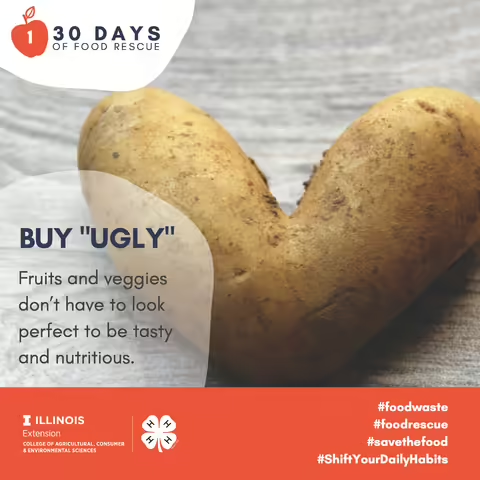URBANA, Ill. — With grocery store shelves occasionally empty in the last month from shoppers eager to stock their pantries, how many homes will do their best not to waste that food? The U.S. Department of Agriculture estimates a family of four loses $1,500 every year on uneaten food, about 1 pound of wasted food per person per day.
Reducing food waste is a shared responsibility where everyone can play a part. While food waste happens after shoppers take food home, losses also occur during growing, harvesting, processing, and transporting foods. “The goal nationally is to reduce food waste by 50% by the year 2030,” says Kristin Bogdonas, University of Illinois Extension nutrition and wellness educator.
Food is at the center of many celebrations, meetings and life events, and is often an eye-catching feature of social media accounts. Consumers regularly share pictures of favorite meals from restaurants, successful recipes made at home, and food purchased from the local farmers market. Despite celebrating food, food waste remains high, says Bogdonas.
North American consumers lead the world in food waste. “Small amounts of waste may go unnoticed over time,” says Bogdonas. “For this reason, consumers are encouraged to track their waste and reevaluate their habits at home and when dining out.”
April is “Winning on Reducing Food Waste Month,” a time to take a closer look at food waste generated in the home. Changing a few habits around meal planning, preparation, and storage can help reduce food waste at home, save money, and protect the environment.
Illinois Extension is launching its “30 Days of Food Rescue” campaign on social media, says Caitlin Mellendorf, Extension nutrition and wellness educator, to highlight the month-long awareness. Along with viewing daily practical tips, the public and community agencies are invited to download materials of the campaign to share across the internet.
Ways to Reduce Food Waste at Home
- Check your kitchen food inventory before going shopping.
- At holidays, birthdays, and office parties, serve less food or try a no-food even.t
- Share meals at restaurants or order from the lunch or à la carte menus.
- Eat leftovers for lunch the next day, or freeze the rest for a quick meal another day.
- Use fresh fruits and vegetables first; then move to frozen, dried, and canned produce.
- Learn more about preserving options from the National Center for Home Food Preservation.
- Store foods with earlier “best-by” or “use-by” date towards the front as a reminder to use them first.
- Learn about storage techniques to keep foods fresher for longer, such as by using the FoodKeeper App developed by USDA
The University of Illinois Extension Nutrition & Wellness program encourages individuals, families and communities to live healthier through online and in-person skill sharing. Learn about managing diabetes, safely preserving foods, being food-safe at home and making healthier choices when shopping, cooking and meal planning. Check the website or follow along on Facebook.
Source:
Kristin Bogdonas, MPH, University of Illinois Extension, Nutrition & Wellness Educator
Caitlin Mellendorf, MS, RD, University of Illinois Extension, Nutrition & Wellness Educator
